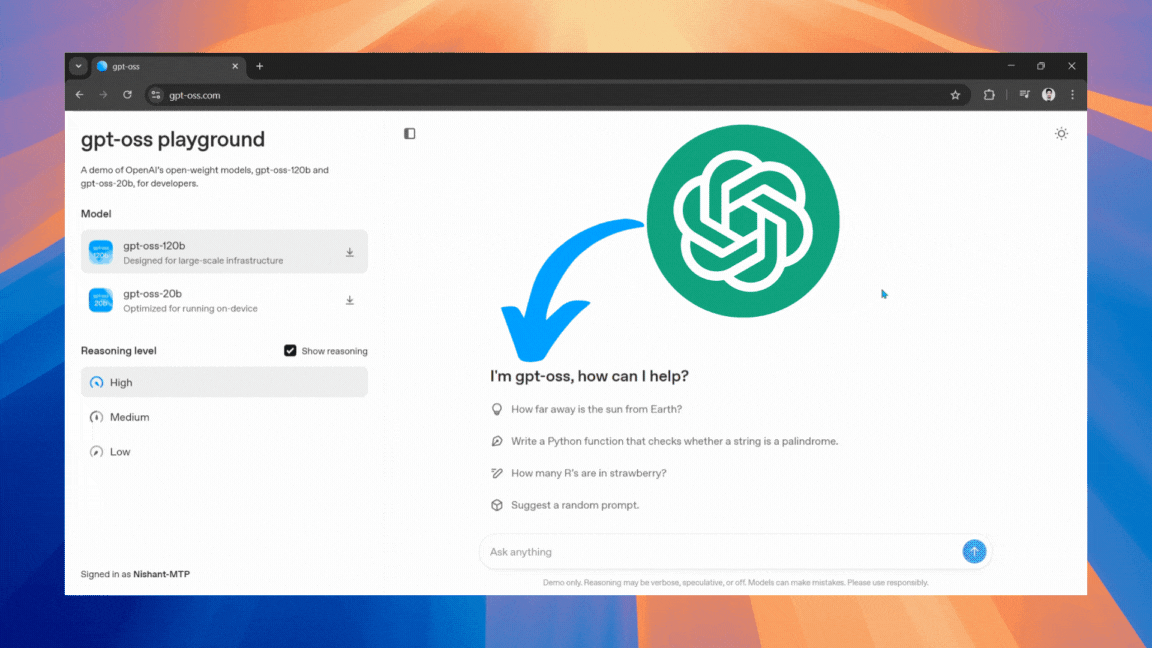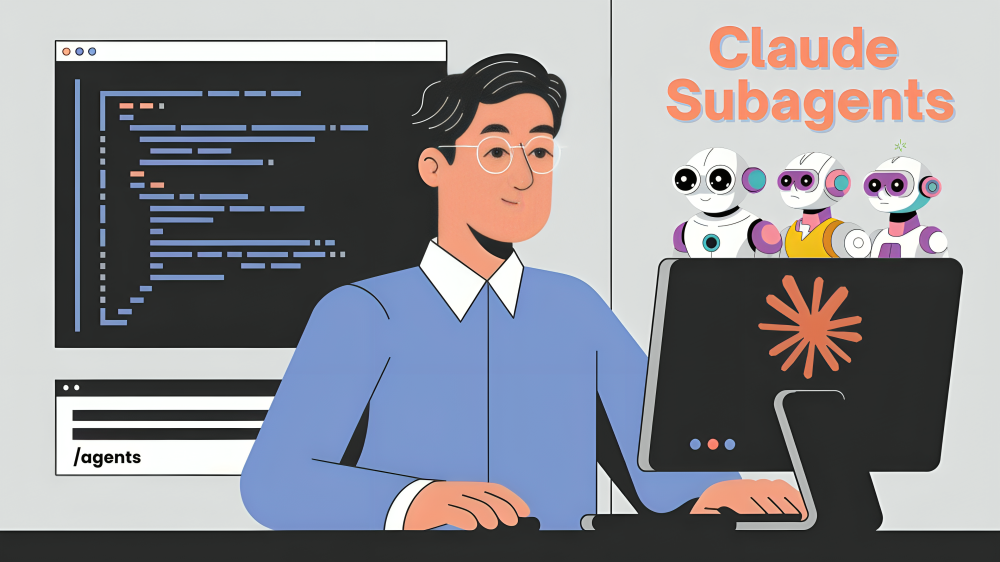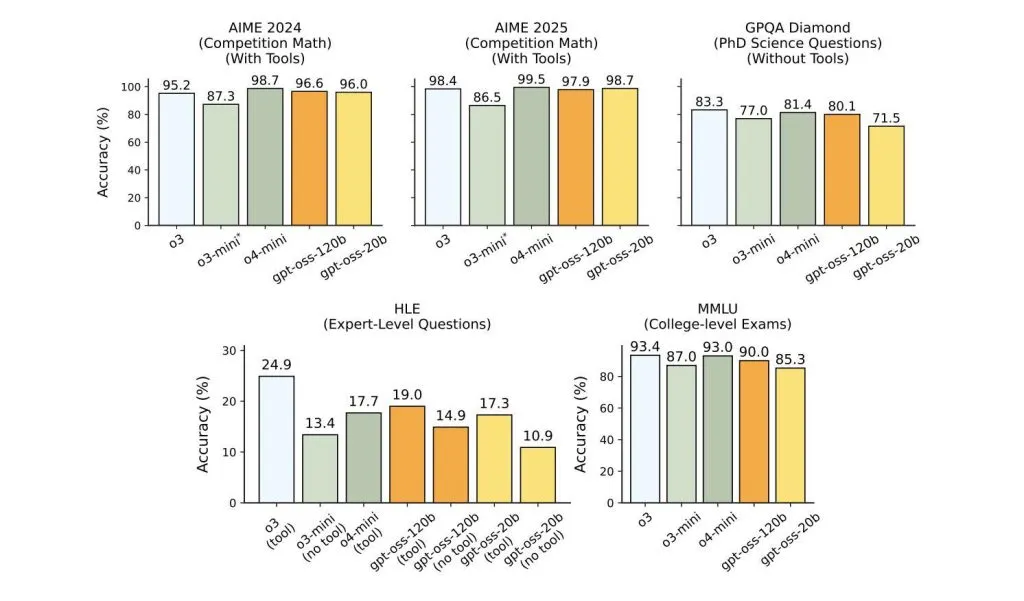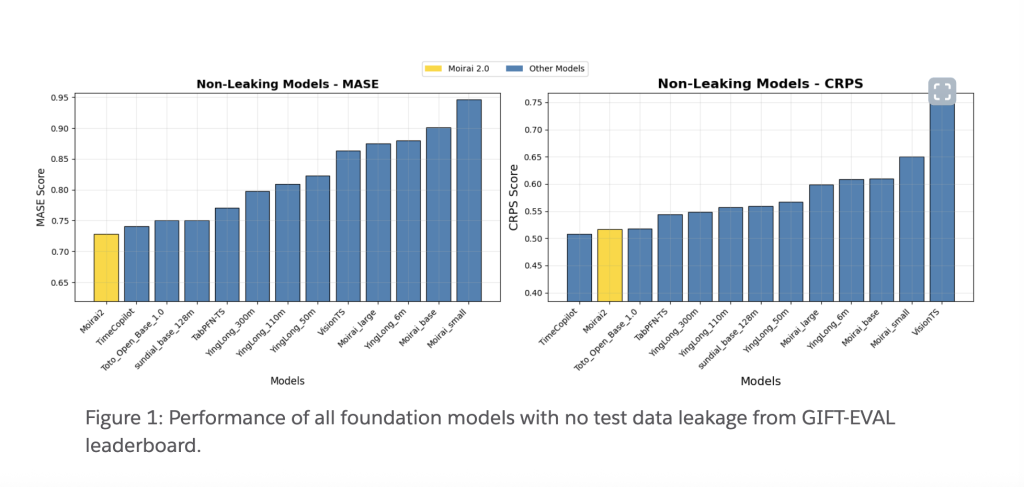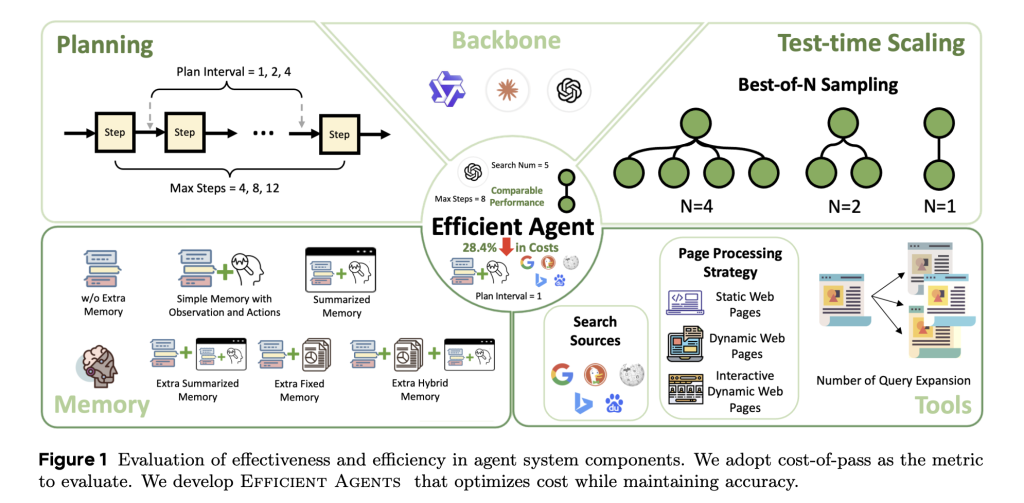A Coding Implementation to Build a Self-Adaptive Goal-Oriented AI Agent Using Google Gemini and the SAGE Framework
In this tutorial, we dive into building an advanced AI agent system based on the SAGE framework, Self-Adaptive Goal-oriented Execution, using Google’s Gemini API. We walk through each core component of the framework: Self-Assessment, Adaptive Planning, Goal-oriented Execution, and Experience Integration. By combining these, we aim to create an intelligent, self-improving agent that can deconstruct a high-level goal, plan its steps, execute tasks methodically, and learn from its outcomes. This hands-on walkthrough helps us understand the underlying architecture and also demonstrates how to orchestrate complex decision-making using real-time AI generation. Check out the FULL CODES here.
import google.generativeai as genai
import json
import time
from typing import Dict, List, Any, Optional
from dataclasses import dataclass, asdict
from enum import Enum
class TaskStatus(Enum):
PENDING = "pending"
IN_PROGRESS = "in_progress"
COMPLETED = "completed"
FAILED = "failed"We start by importing the necessary libraries, including google.generativeai for interacting with the Gemini model, and Python modules like json, time, and dataclasses for task management. We define a TaskStatus enum to help us track the progress of each task as pending, in progress, completed, or failed. Check out the FULL CODES here.
@dataclass
class Task:
id: str
description: str
priority: int
status: TaskStatus = TaskStatus.PENDING
dependencies: List[str] = None
result: Optional[str] = None
def __post_init__(self):
if self.dependencies is None:
self.dependencies = []
class SAGEAgent:
"""Self-Adaptive Goal-oriented Execution AI Agent"""
def __init__(self, api_key: str, model_name: str = "gemini-1.5-flash"):
genai.configure(api_key=api_key)
self.model = genai.GenerativeModel(model_name)
self.memory = []
self.tasks = {}
self.context = {}
self.iteration_count = 0
def self_assess(self, goal: str, context: Dict[str, Any]) -> Dict[str, Any]:
"""S: Self-Assessment - Evaluate current state and capabilities"""
assessment_prompt = f"""
You are an AI agent conducting self-assessment. Respond ONLY with valid JSON, no additional text.
GOAL: {goal}
CONTEXT: {json.dumps(context, indent=2)}
TASKS_PROCESSED: {len(self.tasks)}
Provide assessment as JSON with these exact keys:
{{
"progress_score": <number 0-100>,
"resources": ["list of available resources"],
"gaps": ["list of knowledge gaps"],
"risks": ["list of potential risks"],
"recommendations": ["list of next steps"]
}}
"""
response = self.model.generate_content(assessment_prompt)
try:
text = response.text.strip()
if text.startswith('```'):
text = text.split('```')[1]
if text.startswith('json'):
text = text[4:]
text = text.strip()
return json.loads(text)
except Exception as e:
print(f"Assessment parsing error: {e}")
return {
"progress_score": 25,
"resources": ["AI capabilities", "Internet knowledge"],
"gaps": ["Specific domain expertise", "Real-time data"],
"risks": ["Information accuracy", "Scope complexity"],
"recommendations": ["Break down into smaller tasks", "Focus on research first"]
}
def adaptive_plan(self, goal: str, assessment: Dict[str, Any]) -> List[Task]:
"""A: Adaptive Planning - Create dynamic, context-aware task decomposition"""
planning_prompt = f"""
You are an AI task planner. Respond ONLY with valid JSON array, no additional text.
MAIN_GOAL: {goal}
ASSESSMENT: {json.dumps(assessment, indent=2)}
Create 3-4 actionable tasks as JSON array:
[
{{
"id": "task_1",
"description": "Clear, specific task description",
"priority": 5,
"dependencies": []
}},
{{
"id": "task_2",
"description": "Another specific task",
"priority": 4,
"dependencies": ["task_1"]
}}
]
Each task must have: id (string), description (string), priority (1-5), dependencies (array of strings)
"""
response = self.model.generate_content(planning_prompt)
try:
text = response.text.strip()
if text.startswith('```'):
text = text.split('```')[1]
if text.startswith('json'):
text = text[4:]
text = text.strip()
task_data = json.loads(text)
tasks = []
for i, task_info in enumerate(task_data):
task = Task(
id=task_info.get('id', f'task_{i+1}'),
description=task_info.get('description', 'Undefined task'),
priority=task_info.get('priority', 3),
dependencies=task_info.get('dependencies', [])
)
tasks.append(task)
return tasks
except Exception as e:
print(f"Planning parsing error: {e}")
return [
Task(id="research_1", description="Research sustainable urban gardening basics", priority=5),
Task(id="research_2", description="Identify space-efficient growing methods", priority=4),
Task(id="compile_1", description="Organize findings into structured guide", priority=3, dependencies=["research_1", "research_2"])
]
def execute_goal_oriented(self, task: Task) -> str:
"""G: Goal-oriented Execution - Execute specific task with focused attention"""
execution_prompt = f"""
GOAL-ORIENTED EXECUTION:
Task: {task.description}
Priority: {task.priority}
Context: {json.dumps(self.context, indent=2)}
Execute this task step-by-step:
1. Break down the task into concrete actions
2. Execute each action methodically
3. Validate results at each step
4. Provide comprehensive output
Focus on practical, actionable results. Be specific and thorough.
"""
response = self.model.generate_content(execution_prompt)
return response.text.strip()
def integrate_experience(self, task: Task, result: str, success: bool) -> Dict[str, Any]:
"""E: Experience Integration - Learn from outcomes and update knowledge"""
integration_prompt = f"""
You are learning from task execution. Respond ONLY with valid JSON, no additional text.
TASK: {task.description}
RESULT: {result[:200]}...
SUCCESS: {success}
Provide learning insights as JSON:
{{
"learnings": ["key insight 1", "key insight 2"],
"patterns": ["pattern observed 1", "pattern observed 2"],
"adjustments": ["adjustment for future 1", "adjustment for future 2"],
"confidence_boost": <number -10 to 10>
}}
"""
response = self.model.generate_content(integration_prompt)
try:
text = response.text.strip()
if text.startswith('```'):
text = text.split('```')[1]
if text.startswith('json'):
text = text[4:]
text = text.strip()
experience = json.loads(text)
experience['task_id'] = task.id
experience['timestamp'] = time.time()
self.memory.append(experience)
return experience
except Exception as e:
print(f"Experience parsing error: {e}")
experience = {
"learnings": [f"Completed task: {task.description}"],
"patterns": ["Task execution follows planned approach"],
"adjustments": ["Continue systematic approach"],
"confidence_boost": 5 if success else -2,
"task_id": task.id,
"timestamp": time.time()
}
self.memory.append(experience)
return experience
def execute_sage_cycle(self, goal: str, max_iterations: int = 3) -> Dict[str, Any]:
"""Execute complete SAGE cycle for goal achievement"""
print(f" Starting SAGE cycle for goal: {goal}")
results = {"goal": goal, "iterations": [], "final_status": "unknown"}
for iteration in range(max_iterations):
self.iteration_count += 1
print(f"n
Starting SAGE cycle for goal: {goal}")
results = {"goal": goal, "iterations": [], "final_status": "unknown"}
for iteration in range(max_iterations):
self.iteration_count += 1
print(f"n SAGE Iteration {iteration + 1}")
print("
SAGE Iteration {iteration + 1}")
print(" Self-Assessment...")
assessment = self.self_assess(goal, self.context)
print(f"Progress Score: {assessment.get('progress_score', 0)}/100")
print("
Self-Assessment...")
assessment = self.self_assess(goal, self.context)
print(f"Progress Score: {assessment.get('progress_score', 0)}/100")
print(" Adaptive Planning...")
tasks = self.adaptive_plan(goal, assessment)
print(f"Generated {len(tasks)} tasks")
print("
Adaptive Planning...")
tasks = self.adaptive_plan(goal, assessment)
print(f"Generated {len(tasks)} tasks")
print(" Goal-oriented Execution...")
iteration_results = []
for task in sorted(tasks, key=lambda x: x.priority, reverse=True):
if self._dependencies_met(task):
print(f" Executing: {task.description}")
task.status = TaskStatus.IN_PROGRESS
try:
result = self.execute_goal_oriented(task)
task.result = result
task.status = TaskStatus.COMPLETED
success = True
print(f"
Goal-oriented Execution...")
iteration_results = []
for task in sorted(tasks, key=lambda x: x.priority, reverse=True):
if self._dependencies_met(task):
print(f" Executing: {task.description}")
task.status = TaskStatus.IN_PROGRESS
try:
result = self.execute_goal_oriented(task)
task.result = result
task.status = TaskStatus.COMPLETED
success = True
print(f"  Completed: {task.id}")
except Exception as e:
task.status = TaskStatus.FAILED
task.result = f"Error: {str(e)}"
success = False
print(f"
Completed: {task.id}")
except Exception as e:
task.status = TaskStatus.FAILED
task.result = f"Error: {str(e)}"
success = False
print(f"  Failed: {task.id}")
experience = self.integrate_experience(task, task.result, success)
self.tasks[task.id] = task
iteration_results.append({
"task": asdict(task),
"experience": experience
})
self._update_context(iteration_results)
results["iterations"].append({
"iteration": iteration + 1,
"assessment": assessment,
"tasks_generated": len(tasks),
"tasks_completed": len([r for r in iteration_results if r["task"]["status"] == "completed"]),
"results": iteration_results
})
if assessment.get('progress_score', 0) >= 90:
results["final_status"] = "achieved"
print("
Failed: {task.id}")
experience = self.integrate_experience(task, task.result, success)
self.tasks[task.id] = task
iteration_results.append({
"task": asdict(task),
"experience": experience
})
self._update_context(iteration_results)
results["iterations"].append({
"iteration": iteration + 1,
"assessment": assessment,
"tasks_generated": len(tasks),
"tasks_completed": len([r for r in iteration_results if r["task"]["status"] == "completed"]),
"results": iteration_results
})
if assessment.get('progress_score', 0) >= 90:
results["final_status"] = "achieved"
print(" Goal achieved!")
break
if results["final_status"] == "unknown":
results["final_status"] = "in_progress"
return results
def _dependencies_met(self, task: Task) -> bool:
"""Check if task dependencies are satisfied"""
for dep_id in task.dependencies:
if dep_id not in self.tasks or self.tasks[dep_id].status != TaskStatus.COMPLETED:
return False
return True
def _update_context(self, results: List[Dict[str, Any]]):
"""Update agent context based on execution results"""
completed_tasks = [r for r in results if r["task"]["status"] == "completed"]
self.context.update({
"completed_tasks": len(completed_tasks),
"total_tasks": len(self.tasks),
"success_rate": len(completed_tasks) / len(results) if results else 0,
"last_update": time.time()
})
Goal achieved!")
break
if results["final_status"] == "unknown":
results["final_status"] = "in_progress"
return results
def _dependencies_met(self, task: Task) -> bool:
"""Check if task dependencies are satisfied"""
for dep_id in task.dependencies:
if dep_id not in self.tasks or self.tasks[dep_id].status != TaskStatus.COMPLETED:
return False
return True
def _update_context(self, results: List[Dict[str, Any]]):
"""Update agent context based on execution results"""
completed_tasks = [r for r in results if r["task"]["status"] == "completed"]
self.context.update({
"completed_tasks": len(completed_tasks),
"total_tasks": len(self.tasks),
"success_rate": len(completed_tasks) / len(results) if results else 0,
"last_update": time.time()
})We define a Task data class to encapsulate each unit of work, including its ID, description, priority, and dependencies. Then, we build the SAGEAgent class, which serves as the brain of our framework. It orchestrates the full cycle, self-assessing progress, planning adaptive tasks, executing each task with focus, and learning from outcomes to improve performance in future iterations. Check out the FULL CODES here.
if __name__ == "__main__":
API_KEY = "Use Your Own API Key Here"
try:
agent = SAGEAgent(API_KEY, model_name="gemini-1.5-flash")
goal = "Research and create a comprehensive guide on sustainable urban gardening practices"
results = agent.execute_sage_cycle(goal, max_iterations=2)
print("n" + "="*50)
print(" SAGE EXECUTION SUMMARY")
print("="*50)
print(f"Goal: {results['goal']}")
print(f"Status: {results['final_status']}")
print(f"Iterations: {len(results['iterations'])}")
for i, iteration in enumerate(results['iterations'], 1):
print(f"nIteration {i}:")
print(f" Assessment Score: {iteration['assessment'].get('progress_score', 0)}/100")
print(f" Tasks Generated: {iteration['tasks_generated']}")
print(f" Tasks Completed: {iteration['tasks_completed']}")
print("n
SAGE EXECUTION SUMMARY")
print("="*50)
print(f"Goal: {results['goal']}")
print(f"Status: {results['final_status']}")
print(f"Iterations: {len(results['iterations'])}")
for i, iteration in enumerate(results['iterations'], 1):
print(f"nIteration {i}:")
print(f" Assessment Score: {iteration['assessment'].get('progress_score', 0)}/100")
print(f" Tasks Generated: {iteration['tasks_generated']}")
print(f" Tasks Completed: {iteration['tasks_completed']}")
print("n Agent Memory Entries:", len(agent.memory))
print("
Agent Memory Entries:", len(agent.memory))
print(" Total Tasks Processed:", len(agent.tasks))
except Exception as e:
print(f"Demo requires valid Gemini API key. Error: {e}")
print("Get your free API key from: https://makersuite.google.com/app/apikey")
Total Tasks Processed:", len(agent.tasks))
except Exception as e:
print(f"Demo requires valid Gemini API key. Error: {e}")
print("Get your free API key from: https://makersuite.google.com/app/apikey")
We wrap up the tutorial by initializing the SAGEAgent with our Gemini API key and defining a sample goal on sustainable urban gardening. We then execute the full SAGE cycle and print a detailed summary, including progress scores, task counts, and memory insights, allowing us to evaluate how effectively our agent performed across iterations.
In conclusion, we successfully implemented and ran a complete SAGE cycle with our Gemini-powered agent. We observe how the system assesses its progress, dynamically generates actionable tasks, executes them with precision, and refines its strategy through learned experience. This modular design empowers us to extend the framework further for more complex, multi-agent environments or domain-specific applications.
Check out the FULL CODES here. Feel free to check out our GitHub Page for Tutorials, Codes and Notebooks. Also, feel free to follow us on Twitter and don’t forget to join our 100k+ ML SubReddit and Subscribe to our Newsletter.
The post A Coding Implementation to Build a Self-Adaptive Goal-Oriented AI Agent Using Google Gemini and the SAGE Framework appeared first on MarkTechPost.
MarkTechPost



